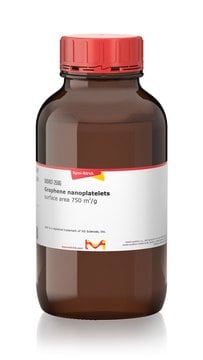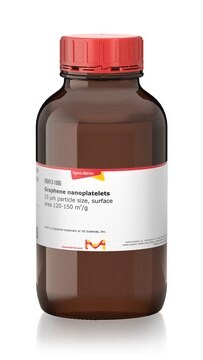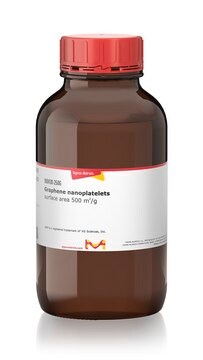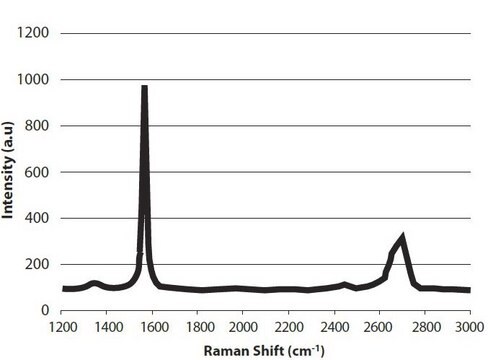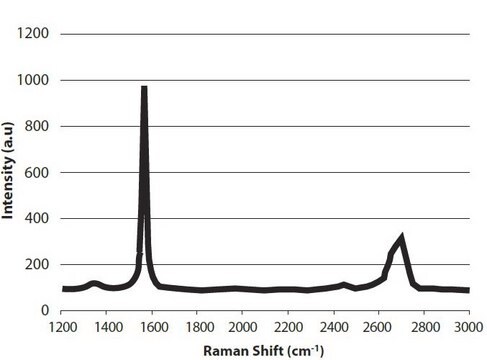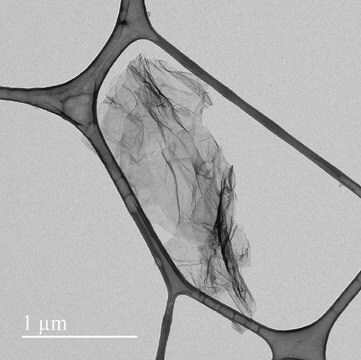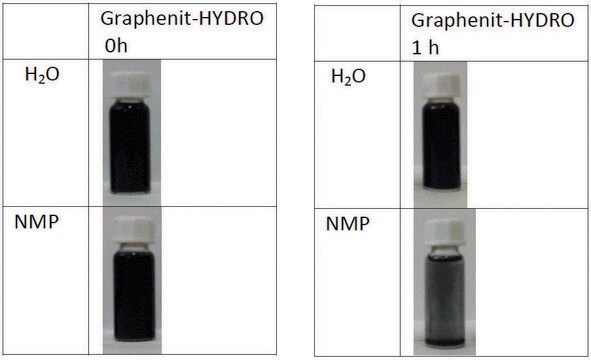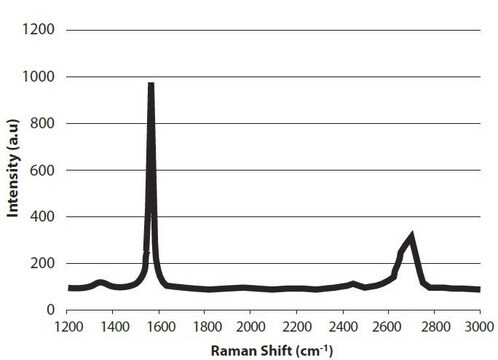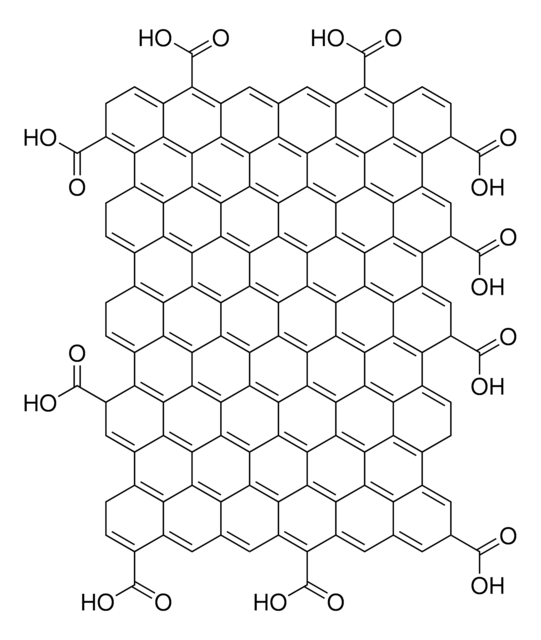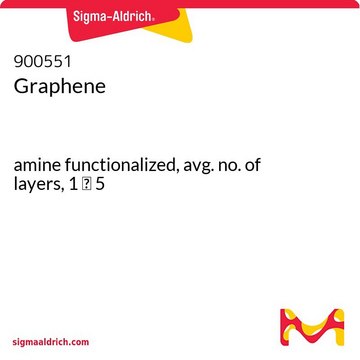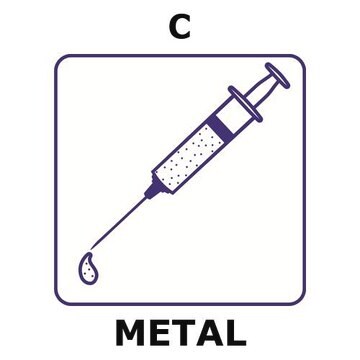900394
Graphene nanoplatelets
Synonym(s):
GNPs, xGnP® graphene nanoplatelets-grade C-300
Sign Into View Organizational & Contract Pricing
All Photos(1)
About This Item
Recommended Products
description
Appearance: Black powder
relative gravity: 2.0 - 2.25 g/cm3
form
powder
surface area
300 m2/g
thickness
a few nm
particle size
<2 μm
bulk density
0.2‑0.4 g/cm3
InChI
1S/C
InChI key
OKTJSMMVPCPJKN-UHFFFAOYSA-N
Looking for similar products? Visit Product Comparison Guide
General description
- xGnP® graphene nanoplatelets are unique nanoparticles consisting of short stacks of graphene sheets having a platelet shape.
- The unique size and platelet morphology of xGnP® graphene nanoplatelets makes these particles especially effective at providing barrier properties, while their pure graphitic composition makes them excellent electrical and thermal conductors. xGnP® graphene nanoplatelets can improve mechanical properties such as stiffness, strength, and surface hardness of the matrix material.
- xGnP® graphene nanoplatelets are compatible with almost all polymers, and can be an active ingredient in inks or coatings as well as an excellent additive to plastics of all types. The unique manufacturing processes are non-oxidizing, so material has a pristine graphitic surface of sp2 carbon molecules that makes it especially suitable for applications requiring high electrical or thermal conductivity.
- Grade C particles typically consist of aggregates of submicron platelets that have a particle diameter of less than 2 microns and a typical particle thickness of a few nanometers, depending on the surface area. In general, grade C shows very high surface area and macro-porosity. Grade C particles are available in different grades with average surface areas of 300, 500 and 750 m2/g.
Application
- Ultracapacitor electrodes.
- Anode materials for lithium-ion batteries.
- Conductive additive for battery electrodes.
- Electrically conductive inks.
- Thermally conductive films and coatings.
- Additive for lightweight composites.
- Films or coatings for EMI shielding.
- Substrate for chemical and biochemical sensors.
- Barrier material for packaging.
- Additive for super-strong concrete.
- Additive for metal-matrix composites.
Other Notes
Graphene nanoplatelets have naturally occurring functional groups like ethers, carboxyls, or hydroxyls that can react with atmospheric humidity to form acids or other compounds. These functional groups are present on the edges of the particles and their wt% varies with particle size.
Legal Information
xGnP is a registered trademark of XG Sciences, Inc.
Storage Class Code
11 - Combustible Solids
WGK
WGK 1
Flash Point(F)
Not applicable
Flash Point(C)
Not applicable
Choose from one of the most recent versions:
Already Own This Product?
Find documentation for the products that you have recently purchased in the Document Library.
Customers Also Viewed
Jian Wang et al.
Polymers, 12(8) (2020-08-23)
Flexible and wearable electronics have huge potential applications in human motion detection, human-computer interaction, and context identification, which have promoted the rapid development of flexible sensors. So far the sensor manufacturing techniques are complex and require a large number of
Ioan Bica et al.
Nanomaterials (Basel, Switzerland), 10(9) (2020-09-13)
We fabricate hybrid magnetoactive materials (hMAMs) based on cotton fibers, silicone oil, carbonyl iron and graphene nanoplatelets (nGr) at various mass concentrations ΦnGr. The obtained materials are used as dielectric materials for manufacturing plane electrical capacitors. The equivalent electrical capacitance
Mechanical properties of graphene nanoplatelet/epoxy composites.
King JA, et al.
Journal of Composite Materials, 49(6), 659-668 (2015)
Performance dependence of thermosyphon on the functionalization approaches: An experimental study on thermo-physical properties of graphene nanoplatelet-based water nanofluids.
Amiri A, et al.
Energy Conversion and Management, 92, 322-330 (2015)
Articles
Recent Advances in Scalable Synthesis and Processing of Two-Dimensional Materials
Global Trade Item Number
| SKU | GTIN |
|---|---|
| 900394-250G | 4061833244968 |
Our team of scientists has experience in all areas of research including Life Science, Material Science, Chemical Synthesis, Chromatography, Analytical and many others.
Contact Technical Service